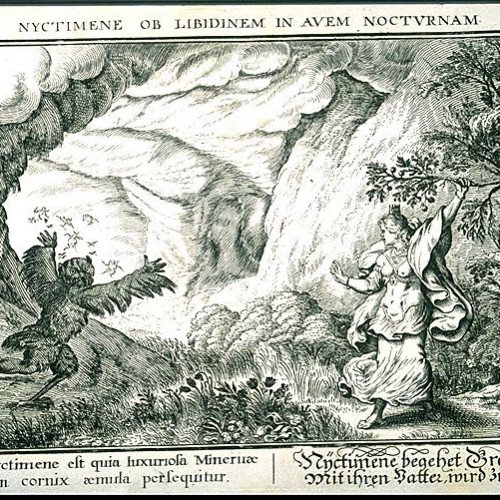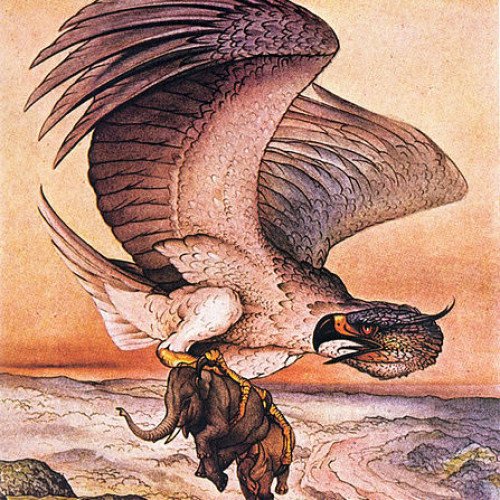Nyctimene (mythology) VS Roc (mythology)

Nyctimene (mythology)
Nyctimene was, according to Roman mythology, the daughter of Epopeus, a king of Lesbos. In some versions of the story she was raped by their father, while in others she was seduced seduced. Out of shame or guilt, she fled to the forest and refused to show her face in daylight. Taking pity on her, Minerva transformed her into the nocturnal owl which, in time, became a widespread symbol of the goddess. In Ovid's Metamorphoses, the transformation was a punishment for an unspecified crime.In Metamorphoses, Cornix (the crow) complains that her place as Minerva's sacred bird is being usurped by Nyctimene, who is so ashamed of herself that she will not be seen by daylight.Her name has been given to a genus of bats and an asteroid.
Statistics for this Xoptio

Roc (mythology)
The Roc is an enormous legendary bird of prey in the popular mythology of the Middle East. The Roc appears in Arabic geographies and natural history, popularized in Arabian fairy tales and sailors' folklore. Ibn Battuta tells of a mountain hovering in the air over the China Seas, which was the Roc.[1] The story collection One Thousand and One Nights includes tales of Abd al-Rahman and Sinbad the Sailor, both of which include the Roc.